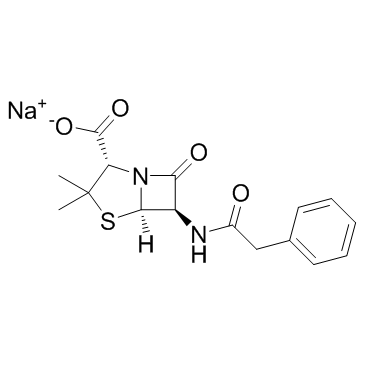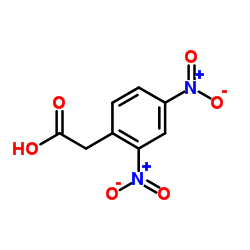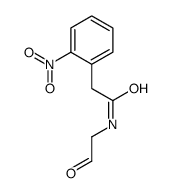69-57-8
| Name | benzylpenicillin sodium |
|---|---|
| Synonyms |
[2S-(2a,5a,6b)]-3,3-Dimethyl-7-oxo-6-[(phenylacetyl)amino]-4-thia-1-azabicyclo[3.2.0]heptane-2-carboxylic Acid Monosodium Salt
MFCD00069666 Penicillin-G, monosodium salt Sodium Benzylpenicillin SODIUM PENICILLIN G Sodium Penicillin EINECS 200-710-2 4-thia-1-azabicyclo[3.2.0]heptane-2-carboxylic acid, 3,3-dimethyl-7-oxo-6-[(phenylacetyl)amino]-, monosodium salt, (2S,5R,6R)- Pencillin G sodium Sodium (2S,5R,6R)-3,3-dimethyl-7-oxo-6-[(phenylacetyl)amino]-4-thia-1-azabicyclo[3.2.0]heptane-2-carboxylate 4-Thia-1-azabicyclo[3.2.0]heptane-2-carboxylic acid, 3,3-dimethyl-7-oxo-6-[(2-phenylacetyl)amino]-, sodium salt, (2S,5R,6R)- (1:1) Penicillin Penicillin G Sodium Salt Nalpen G sodium benzylpenicillinate (2S,5R,6R)-3,3-diméthyl-7-oxo-6-[(phénylacétyl)amino]-4-thia-1-azabicyclo[3.2.0]heptane-2-carboxylate de sodium |
| Description | Penicillin G sodium salt is a typical β-lactam antibiotic. |
|---|---|
| Related Catalog | |
| In Vitro | The Ultraviolet-visible (UV-Vis) absorption spectrum of the Penicillin G sodium salt-TEM-1 system is markedly different to that of Penicillin G sodium salt and TEM-1 β-lactamase, indicating the formation of new complexes between Penicillin G sodium salt and TEM-1 β-lactamase. The UV-Vis absorption of TEM-1 β-lactamase increases and a slight red-shift occurs as the concentration of Penicillin G sodium salt increasing, indicating that the interaction between Penicillin G sodium salt and TEM-1 β-lactamase results in subtle conformational changes of TEM-1 β-lactamase[1]. |
| In Vivo | In the logistic regression model, the probability of a positive swab in the control group is 1.6 times higher than that in the pigs treated with Penicillin G sodium salt (P<0.05). In the control group, the risk of a swab having 10 to 99 colonies per plate, compare to having zero per plate, is 2.3 times greater than that in the pigs treated with Penicillin G sodium salt (P=0.022)[2]. |
| Kinase Assay | At 278 K, various concentrations of Penicillin G sodium salt, cefalexin and cefoxitin solutions are added to TEM-1β-lactamase solution (5×10-6 M). The concentrations of the three antibiotics are gradually increased from 0 to 25×10-6 M. Following mixing and interaction for 2 min, the Ultraviolet-visible (UV-Vis) absorption spectra are recorded on a spectrophotometer with a slit of 2 nm and scanning speed of 400 nm/min using 0.02 M phosphate buffer (pH 7.0) as a reference[1]. |
| Animal Admin | A randomized complete block design with 2 replicates is used for this study. Each replicate includes 448 pigs, with 16 pens and 28 pigs per pen. Pigs are also sorted by weight; such that animals of similar weight based on visual observation are grouped together within blocks. Two treatments are randomly assigned within each block of 2 contiguous pens using a formal randomization process. The treatment groups are Control (no treatment given) and Treated (Penicillin G sodium salt). Penicillin G sodium salt is administered via the drinking water for 5 d over 2 periods of treatment. The first treatment period commences on the day of weaning, when the pigs are moved into the nursery barns (Day 1) and ends on Day 5. The second treatment period begins on Day 21 and ends on Day 25. The Control group does not receive treatment[2]. |
| References |
| Density | 1.41 |
|---|---|
| Boiling Point | 663.3ºC at 760 mmHg |
| Melting Point | 209-212°C |
| Molecular Formula | C16H17N2NaO4S |
| Molecular Weight | 356.372 |
| Exact Mass | 356.080658 |
| PSA | 114.84000 |
| Index of Refraction | 300 ° (C=2, H2O) |
| Storage condition | 2-8°C |
| Water Solubility | 5-10 g/100 mL at 25 ºC |
CHEMICAL IDENTIFICATION
HEALTH HAZARD DATAACUTE TOXICITY DATA
|
| Symbol |

GHS08 |
|---|---|
| Signal Word | Danger |
| Hazard Statements | H317-H334 |
| Precautionary Statements | P261-P280-P284-P304 + P340-P342 + P311 |
| Personal Protective Equipment | dust mask type N95 (US);Eyeshields;Faceshields;Gloves |
| Hazard Codes | Xn:Harmful |
| Risk Phrases | R42/43 |
| Safety Phrases | S22-S36/37-S45 |
| RIDADR | NONH for all modes of transport |
| WGK Germany | 2 |
| RTECS | XH9800000 |
| HS Code | 2941109900 |
| Precursor 0 | |
|---|---|
| DownStream 2 | |
| HS Code | 2941109900 |
|---|




